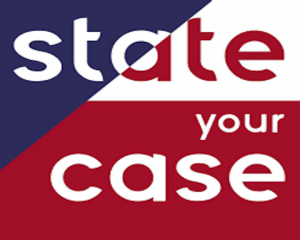“State Your Case” – Raising the Federal Minimum Wage: Part I
“State Your Case” – Raising the Federal Minimum Wage: Part I
Samantha Badr
Another week – another new blog! Since we’re all in the mood for something different, I wanted to introduce a new mini-series I like to call, “State Your Case”. In this series I will research controversial topics and state the case for each side of the argument.
In the beginning of February, President Joe Biden introduced his $1.9 trillion relief package in hopes of helping the economy recover from the pandemic. If approved, part of this package can include raising the federal minimum wage to $15 an hour, as opposed to the $7.25 rate established in July of 2009.
To understand the federal minimum wage is to understand the Fair Labor Standards Act (FSLA). According to the U.S. Department of Labor, the FSLA establishes minimum wage, overtime pay, recordkeeping, and youth employment standards affecting employees in the private sector and in Federal, State, and local governments. Although the federal minimum wage is set at $7.25, some states can still pay their employees less, with certain exceptions. In Georgia, for example, the current state minimum wage is $5.15. Essentially, if a Georgian business owner has less than $40,000 in sales annually, or five employees or less – they can pay their employees $5.15 hourly. Otherwise, under FSLA, employers must pay a minimum of $7.25.
Currently, states can determine their minimum wage and if they want to pay the federal minimum rate or higher. For reference, I have computed the average minimum wage by states per region, based on Department of Labor statistics. For the Northeast region the average rate is $10.99. In the Southeast, the going average is $7.62, while the Southwest has an average of $9.28. As for the Western region, the average minimum wage rate is $9.80, and for the Midwest, the average is $8.42. With cost of living in mind, what benefits could arise from a $15.00 an hour federal minimum wage across the map?
For starters, increasing the federal minimum wage can increase employee retention and decrease turnover. If employees can cover the cost of living, morale increases – in turn, increasing productivity. It’s common knowledge that employees want to be compensated fairly, so if their wages increase, they are more likely to show up to work. Industries with high turnover rates will benefit the most from the increase in minimum wage.
Another benefit of a federal minimum wage increase is economic growth. An increase in income can lead to consumers spending more money, thus increasing demand and business revenue. The Economic Policy Institute claims that if minimum wage increases from $7.25 to $10.10, it could supply the economy with $22.1 billion and create about 85,000 new jobs.
With more money pumped into our economy, the need for government dependence decreases. According to a Congressional Budget Office report in 2014, increasing the minimum wage to $10.10 could lift 900,000 people out of poverty. If lower income workers earned more money, their eligibility for government benefits, decreases. The government can also reduce their spending on assistance programs by the millions, if the minimum wage increases.
Aside from employer and government benefits, increasing the federal minimum wage can also benefit the employees themselves. If wages increase, workers have more time and money to invest in their education. Working teens are less likely to finish high school or seek higher education if they have to work to help support their families. An increase in their pay can give more students the opportunity to attend college. Further, an educated workforce increases innovation – which is another benefit to employers.
Increasing the federal minimum wage simply won’t happen overnight – but if it’s approved, it could potentially benefit the economy and the general population. Are we for it, or against it? Stay tuned for next week, where potential disadvantages will be discussed. As my jury, it will be up to you to decide after both cases have been presented.

What are your thoughts on raising the federal minimum wage?